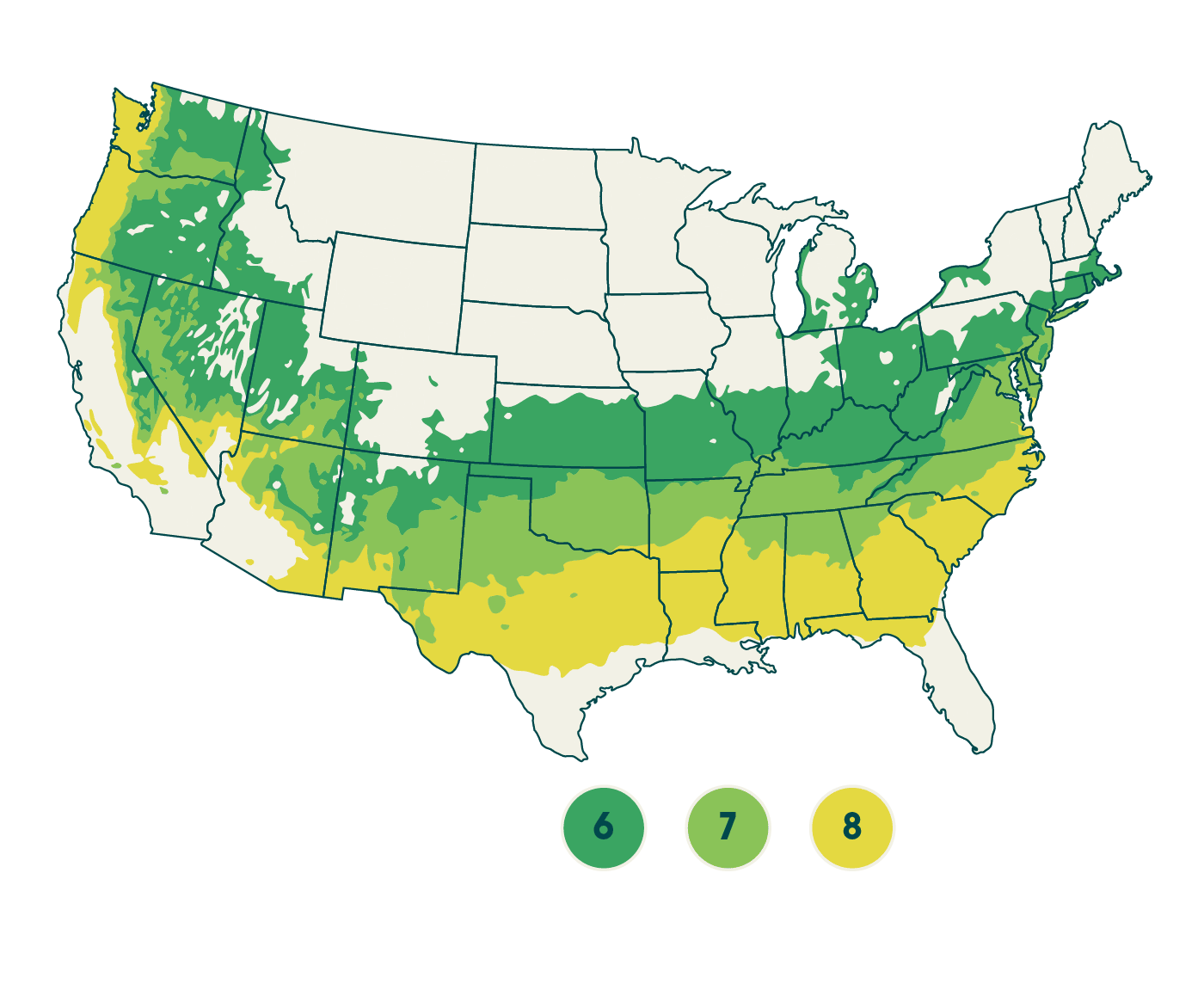Rubus Ponca
Thornless Blackberry - Taste of Heaven™
Key Plant Details
Planting Zones:
5, 6, 7, 8, 9
Soil Type:
Sandy, Loamy
Light Requirement:
Sun
Moisture:
Average, Wet
Plant Characteristics
Mature Size:
2-3 foot spread, 4-5 feet in height
Annual Growth Rate:
Moderate
Flower Color:
White
Bloom Time:
Spring, Summer
Shop By Use:
Attracts Pollinators, Edibles
Care Tips
Care Tips - Growing:
Fruits are ready to harvest when they are a deep black and separate easily from the plant, usually mid to late summer, depending on your climate. Taste of Heaven blackberry is self-fruiting and does not require a different blackberry variety for pollination. Like most fruit-bearing shrubs, it will take a few years for the plant to mature enough to produce abundant crops
Care Tips - Pruning:
Though pruning your blackberry is a crucial part of keeping it healthy and productive, it’s very simple once you understand its unique lifecycle. Taste of Heaven blackberry is a floricane, or summer-bearing, blackberry: in year one, canes emerge from the crown of the plant and grow tall and leafy; these are known as primocanes. In year two, those same canes are now called floricanes, which flower, fruit, then die. On an established plant, there will always be a mix of primocanes and floricanes so you will get fruit every year. Plants should be pruned three times each year: Mid-late summer: Once the berries have been harvested, cut all floricanes – those that just bore fruit – down to the ground. Though this may sound extreme, they are going to die anyway, and this allows the plant to put its energy into the remaining primocanes for a better crop next year. Late winter/early spring: Shorten lateral (horizontal) growth on the standing canes (which have become floricanes since they are in their second year) to 12-16″/30-41cm. If canes are very abundant or congested, thin to 4-8 of the strongest, spacing them evenly throughout each plant. Late spring/early summer: When the primocanes (growth that emerged from the roots that spring) reach 30-36″/76-92cm, pinch off the tips to encourage development of lateral growth.
Care Tips - Soil:
Rich, well-drained soils, acid soils are best for high quality and quantity of fruit.
Care Tips - Uses:
Home gardens; fruit production
Zone Map
This plant will grow in these zones


